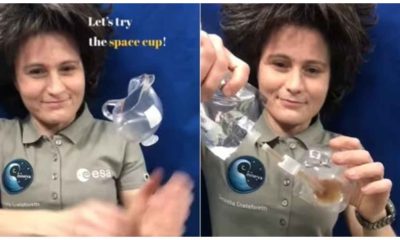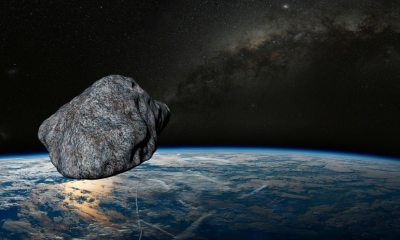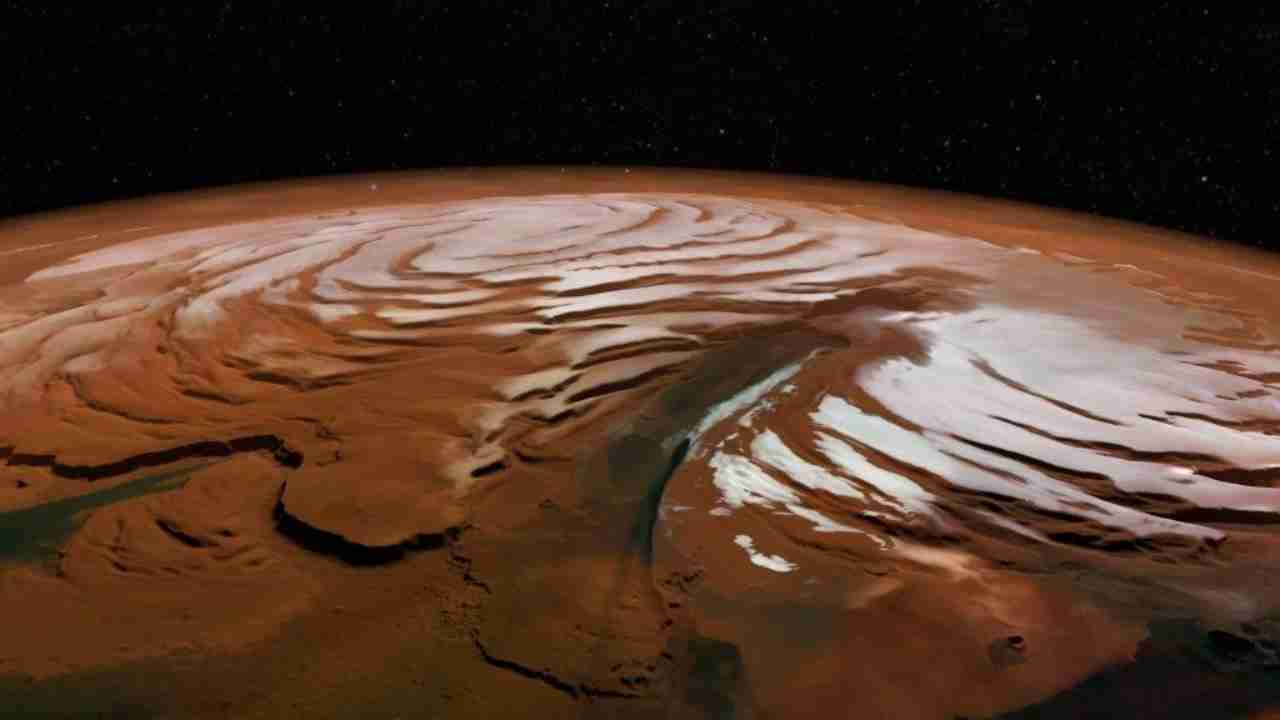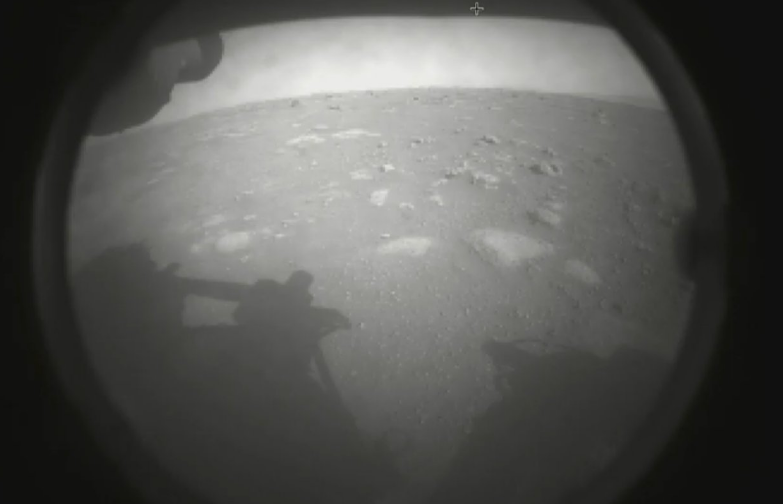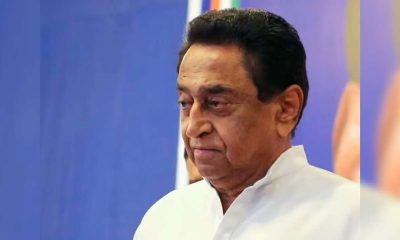Latest Science News
NASA rover finds ancient Mars had ingredients for life
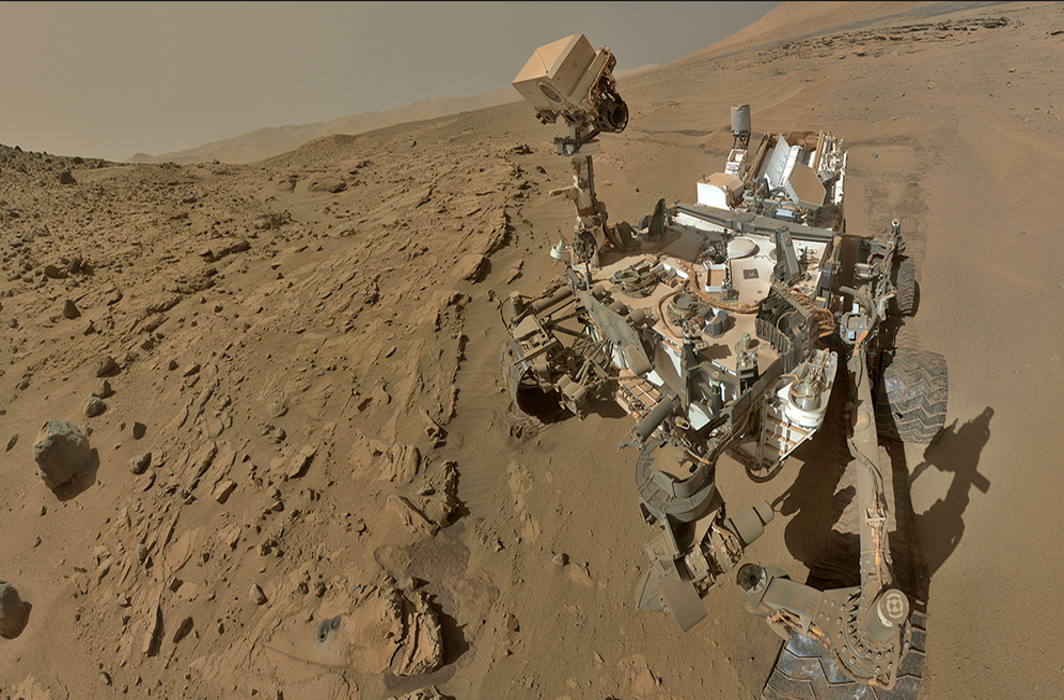
NASA’s Curiosity Rover has found large amounts of organic compounds on the surface of Mars and seasonal fluctuations of atmospheric methane in findings that mark some of the strongest evidence yet that Earth’s neighbour may have harboured life.
The discovery has been reported in the journal Science by NASA’s Jennifer Eigenbrode and an international team of scientists. They used Discovery’s Sample Analysis at Mars (SAM) instrument to examine samples that had been gathered from Mars’ Gale crater using a drill that can probe 5 cm below the surface, reported PhysicsWorld.
The Rover drilling into mudstone that was laid down 3.5 bn years ago at the bottom of Gale crater, which is supposed to have been a Martian lake, found molecules of sulphur-rich thiophenes, aromatic hydrocarbons, such as benzene, and aliphatic hydrocarbons such as propane just 2 inches or 5 cm below the surface.
While the presence of these molecules does not prove that life once existed on the red planet, the discovery suggests that conditions on Mars could have been like those here on Earth when life first emerged more than 3 bn years ago.
Curiosity also measured an unexpectedly large seasonal cycle in the low levels of atmospheric methane. About 95 percent of the methane in Earth’s atmosphere is produced from biological activity, though the scientists said it is too soon to know if the Martian methane also is related to life.
Earlier findings reported last year said Mars was more habitable than Earth in the early phase of solar system, about 4 bn to 3 bn years ago.
This is not the first time that Curiosity has detected organic molecules, but previous measurements were considered unreliable because of possible sample contamination and unwanted chemical reactions.
While such organic compounds could have been produced by ancient life – or could have provided a food source for ancient organisms – it is also possible that the molecules were created in the complete absence of life. “Curiosity has not determined the source of the organic molecules,” explains Eigenbrode.
Apparently barren and devoid of life today, scientists believe that Mars may have once been a more hospitable environment. Data gathered by Curiosity in 2015 suggests that the Gale Crater was once home to streams and lakes of liquid water. Now, scientists know that some of this water contained molecules that could be associated with life.
NASA associate administrator Thomas Zurbuchen says the agency wants to keep searching for signs of life on Mars. “With these new findings, Mars is telling us to stay the course and keep searching for evidence of life.”
In a second paper in Science, NASA’s Christopher Webster and an international team describe how they have used instruments on-board Curiosity to measure a seasonal variation in methane levels in the Martian atmosphere. The study, which ran for three Martian years (about five Earth years), found that methane concentration in the summer was nearly three times higher than in the winter. Webster and colleagues say that the variation cannot currently be explained by processes known to occur on Mars.
“What the organic detections in the rock do is to add to the story of habitability. It tells us that this ancient environment on Mars could have supported life,” Eigenbrode said. “Everything that was needed to support life was there. But it doesn’t tell us that life was there.”
Christopher Webster, an atmospheric science research fellow at NASA‘s Jet Propulsion Laboratory in California, said it is possible existing microbes are contributing to the Martian atmospheric methane, said a report by news agency Reuters.
“With this new data, we again cannot rule out microbial activity as a potential source,” Webster said.
The amount of methane peaked at the end of summer in the northern hemisphere at about 2.7 times the level of the lowest seasonal amount.
The scientists were surprised to find organic compounds, especially in the amounts detected, considering the harsh conditions, including bombardment of solar radiation on the Martian surface. After drilling, Curiosity heats the rock samples, releasing the compounds.
Referring to the findings regarding organic compounds and methane, Webster said, “They hint at an earlier time on Mars when water was present and the existence of primitive life forms was possible.”
The scientists hope to find better preserved organic compounds with Curiosity or other rovers that would allow them to check for chemical signatures of life.
India News
President Droupadi Murmu launches India’s first homegrown CAR T-cell therapy for cancer treatment
The gene-based therapy, which is developed by the IIT Bombay and Tata Memorial Centre, is being rolled out in India at about one-tenth of its price outside the country.
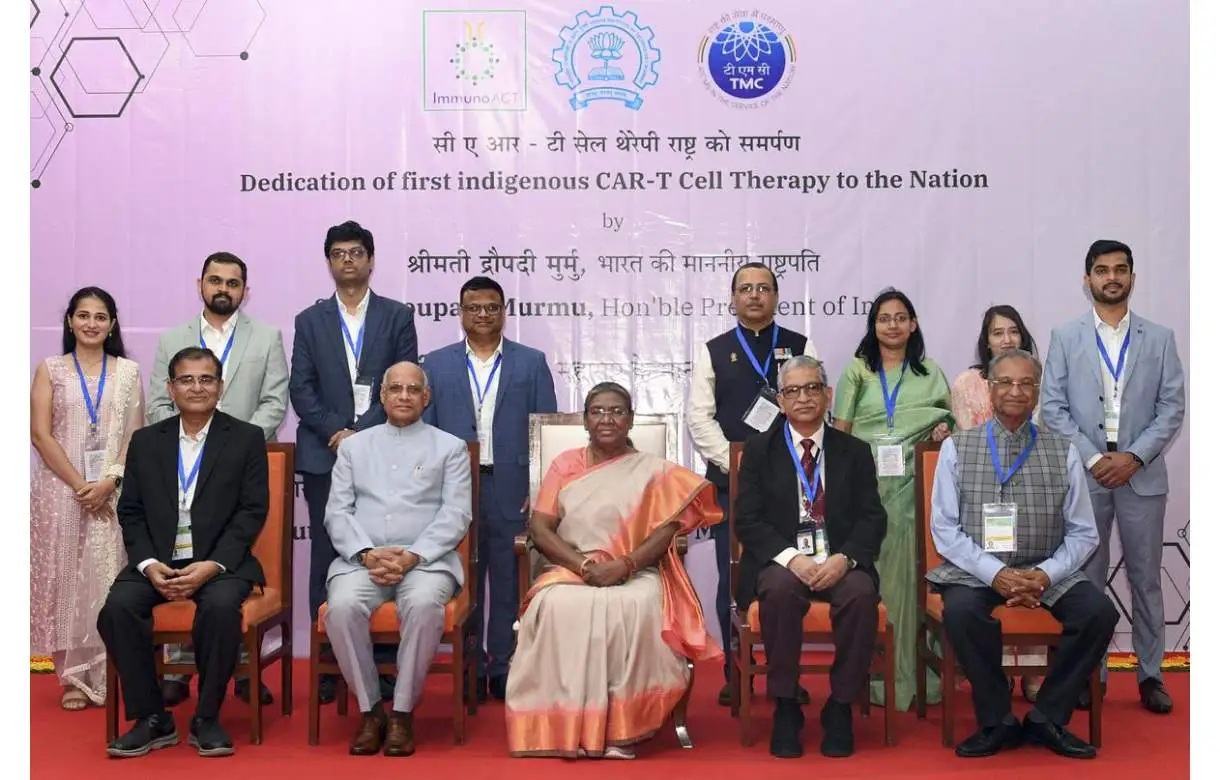
President Droupadi Murmu on Thursday launched India’s first indigenously-developed CAR T-cell therapy, a gene-based therapy, for cancer treatment, hailing it as a breakthrough that provides new hope for humankind in the battle against the diseases.
Speaking at the launch event at the Indian Institute of Technology (IIT) Bombay, Murmu said the indigenous development of the CAR T-cell therapy was an example of the Make in India initiative.
The gene-based therapy, which is developed by the IIT Bombay and Tata Memorial Centre, is being rolled out in India at about one-tenth of its price outside the country, as per the senior official.
In CAR T-cell therapy, a patient’s T-cells, which is a type of immune system cell or stem cell, are modified in the laboratory and inserted back into the patient to attack and destroy cancer cells after editing the stem cell.
The NexCAR19 CAR T-cell therapy, the country’s first Made in India CAR T-cell therapy, is expected to bring down the cost of treatment significantly.
During her speech, Murmu said that this therapy is considered a phenomenal advance in medical sciences. The development of this therapy is also an example of the Make in India initiative and speaks volumes about Indian scientists and physicians, she added.
The launch of India’s first gene therapy is a significant breakthrough in the battle against cancer. As this line of treatment, named CAR T-cell therapy, is accessible and affordable, it provides a new hope for the whole of humankind, President Murmu further added.
The Tata Memorial Centre director Sudeep Gupta said the CAR T-cell therapy was enormously expensive and out of the reach of an overwhelming majority of people.
Asserting that, he said NexCar19 needs to be custom manufactured for every patient under the most stringent conditions, but it has been rolled out at approximately one-tenth of the price at which it is available outside India.
The treatment costs approximately Rs 4 crore abroad against Rs 30 lakh in India, said IIT Bombay director Prof Subhasis Chaudhuri.
He further said that the low-cost CAR T-cell therapy was a huge achievement for the country and cancer patients, and places India firmly on the global map of cell and gene therapy.
Comparing the achievement of Chandrayaan-3 with CAR T-cell therapy, Chaudhuri asserted that CAR-T cell therapy heralds India’s entry into the cell and genetic engineering group.
The Tata Memorial Centre director Gupta said the treatment will help some 20,000 Indians every year, and its rollout is a milestone in the field of cancer care and genetic engineering.
He added the CAR T-cell was not only a scientific achievement of the highest order but also had immense practical application. NexCAR19 will save many, many lives and wipe many, many tears, he emphasised.
India News
ISRO launches weather satellite INSAT-3DS to monitor Earth’s surface, oceans
The Naughty Boy has now become a mature, obedient and disciplined boy like PSLV, and GSLV as they have become a very robust vehicle for ISRO, said Tomy Joseph.
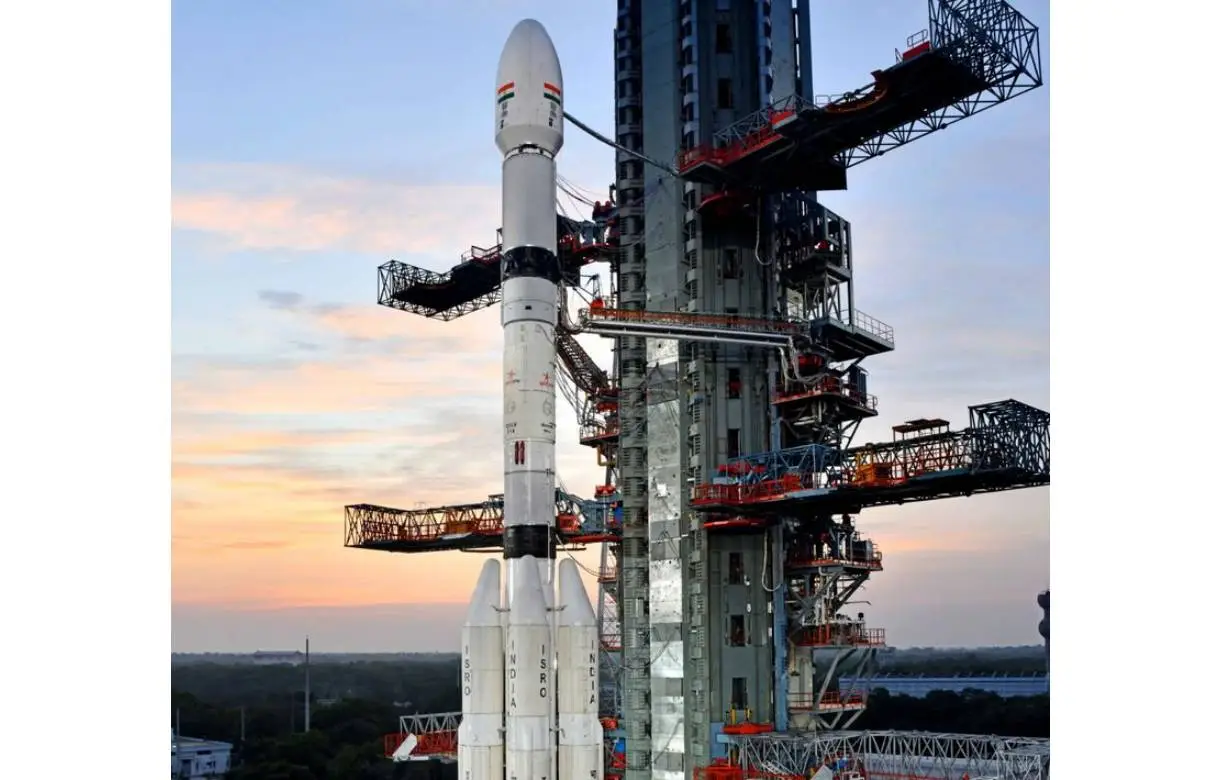
The Indian Space Research Organisation (ISRO) on Saturday launched the INSAT-3DS mission from Satish Dhawan Space Centre in Sriharikota at 5:35 pm to monitor the Earth’s surface, observe the ocean and analyse the environment through various essential meteorological perspectives.
In its mission, the Geosynchronous Satellite Launch Vehicle (GSLV) aimed to deploy the INSAT-3DS meteorological satellite into the Geosynchronous Transfer Orbit (GTO). Subsequent orbit-raising maneuvers will ensure that the satellite is positioned in a Geo-stationary Orbit.
After being positioned in GSO, it will provide information on diverse atmospheric conditions via vertical profiles. INSAT-3DS will manage data collection and dissemination from Data Collection Platforms (DCPs). The satellite will help in search and rescue services.
Congratulating the team, ISRO Chairman S Somanath expressed his happiness over the successful accomplishment of the mission GSLV-F14 INSAT-3DS. He further said that the spacecraft has been injected into a very good orbit. The space agency has also noted that the vehicle has performed very well.
The INSAT-3DS Mission Director, Tomy Joseph sarcastically remarked, saying the Naughty Boy has now become a mature, obedient and disciplined boy like PSLV, and GSLV as they have become a very robust vehicle for ISRO.
The Geosynchronous Satellite Launch Vehicle (GSLV) is a launch vehicle with a length of 51.7 meters and a liftoff mass of 420 tonnes. It consists of three stages, the first stage (GS1) is made up of a solid propellant motor with 139-ton propellant and four earth-storable propellant stages (L40) strapons. Each strapon carries 40 tons of liquid propellant.
The second stage (GS2) is also an earth-storable propellant stage that carries 40-ton propellant, and the third stage (GS3) is a cryogenic stage with a 15-ton propellant loading of liquid oxygen (LOX) and liquid hydrogen (LH2).
To protect the satellite during the atmospheric regime, it is covered by an Ogive payload fairing. The GSLV is versatile and can be used to launch various spacecraft capable of performing communications, navigation, earth resource surveys, and other proprietary missions.
The launch of INSAT-3DS was a follow-on mission of Third Generation Meteorological Satellite from Geostationary Orbit. According to ISRO, the GSLV-F14/INSAT-3DS mission has been fully funded by the Ministry of Earth Sciences (MoES) and designed for enhanced meteorological observations and monitoring of land and ocean surfaces for weather forecasting and disaster warning.
The satellite will augment the Meteorological services along with the presently operational INSAT-3D and INSAT-3DR satellites.
Notably, the services will be used by various departments of the MoES such as the India Meteorology Department (IMD), National Centre for Medium-Range Weather Forecasting (NCMRWF), Indian Institute of Tropical Meteorology (IITM), National Institute of Ocean Technology (NIOT), Indian National Center for Ocean Information Services (INCOIS) and various other agencies.
India News
PM Modi says day not far when an Indian will land on moon in indigenously built spacecraft
PM Modi said a strong roadmap has been drawn till 2040 for the space sector. He made the announcement after flagging off the first Namo Bharat train on the 17 km stretch of the Delhi-Meerut Regional Rapid Transit system.
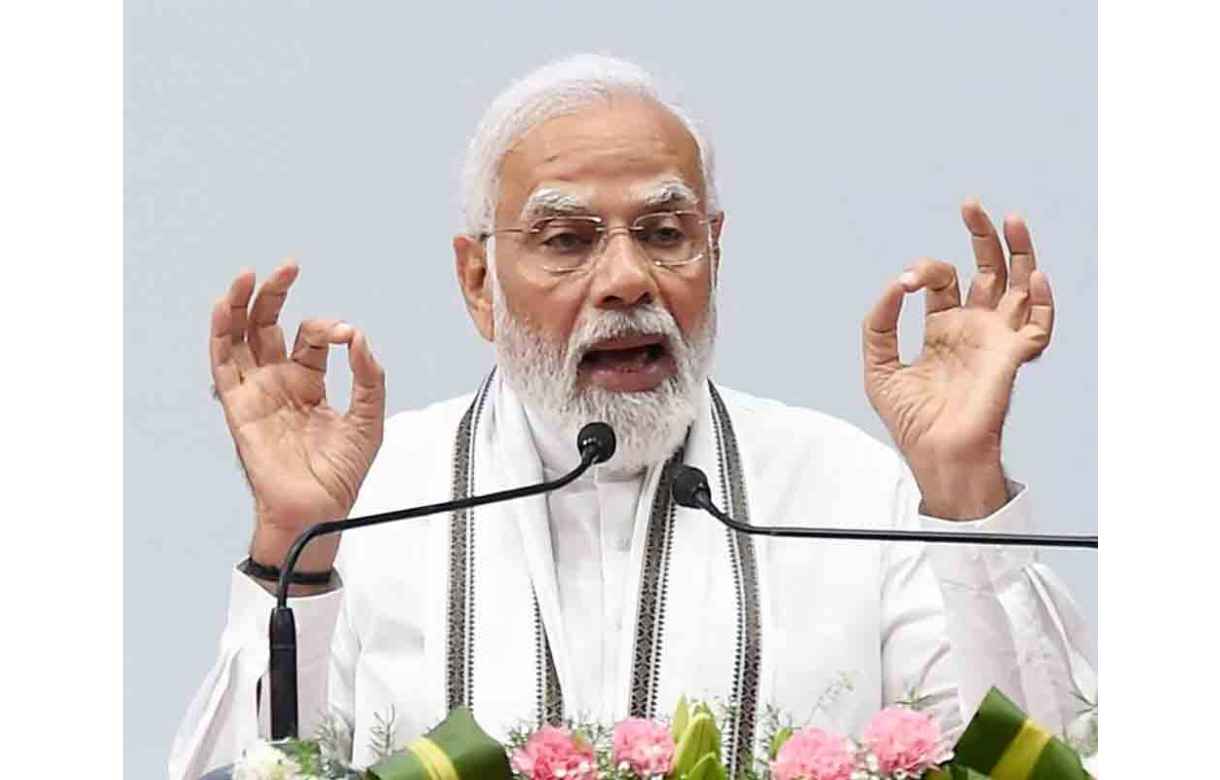
Prime minister Narendra Modi on Friday said the government has drawn up a roadmap for the development of space sector and the day is not far when an Indian will travel to the moon in an indigenously built spacecraft. PM Modi said India’s Gaganyaan will soon take Indian astronauts to space and the India wants to establish its own space station.
PM Modi said a strong roadmap has been drawn till 2040 for the space sector. He made the announcement after flagging off the first Namo Bharat train on the 17 km stretch of the Delhi-Meerut Regional Rapid Transit system.
PM Modi recalled the success of India’s moon mission Chandrayaan3 which had recently placed the country’s tricolour on the lunar surface. He said India of the 21st century is writing new chapters of progress and development for the landing on the moon has left the world awestruck.
PM Modi added with impeccable hosting of the G20 summit, today’s India has become the centre of attraction and curiosity for the world. He said today’s India wins more than 100 medals in the Asian Games.
PM Modi added today’s India launches 5G on its own strength and takes it to all corners of India. He further added todays India does the highest number of digital transactions. He said the Namo trains that were flagged off today were all made in India.
PM Modi set goals for the Indian Space Research Organisation (ISRO) by asking engineers and scientists to work towards setting up an Indian space staion by 2035 and sending an Indian astronaut to the lunar surface by 2040. PM Modi also asked the scientists to undertake interplanetary missions like the Venus orbiter and also attempt a landing on Mars. PM Modi further added the government has handed over festival gifts by reducing the gas cylinder price by Rs 500 for Ujjwala Yojana beneficiaries.
-

 2024 Lok Sabha Elections14 hours ago
2024 Lok Sabha Elections14 hours agoPrime Minister Narendra Modi urges citizens to vote in record numbers as voting for first phase of Lok Sabha elections begins on 102 seats across India
-

 2024 Lok Sabha Elections12 hours ago
2024 Lok Sabha Elections12 hours agoKamal Haasan, Rajinikanth, Vijay Sethupathi, Dhanush vote in Chennai
-

 2024 Lok Sabha Elections13 hours ago
2024 Lok Sabha Elections13 hours agoLok Sabha elections 2024: Google Doodle marks the start of polls with index finger voting symbol
-

 2024 Lok Sabha Elections12 hours ago
2024 Lok Sabha Elections12 hours agoLok Sabha elections 2024: TMC, BJP workers clash in West Bengal’s Cooh Behar ahead of voting
-

 2024 Lok Sabha Elections11 hours ago
2024 Lok Sabha Elections11 hours agoLok Sabha elections 2024: Newly married couple cast vote in Jammu and Kashmir’s Udhampur, video goes viral
-

 Entertainment9 hours ago
Entertainment9 hours agoDo Aur Do Pyaar social media review: Social media users say Vidya Balan, Pratik Gandhi deliver standout performances in this adorable film
-

 2024 Lok Sabha Elections11 hours ago
2024 Lok Sabha Elections11 hours agoTamil Nadu BJP chief K Annamalai says party will sweep Karnataka and emerge victorious in Telangana, accuses DMK, AIADMK of influencing voters in Coimbatore
-

 Entertainment11 hours ago
Entertainment11 hours agoYami Gautam starrer Article 370 releases on Netflix today

